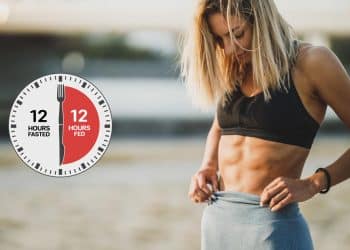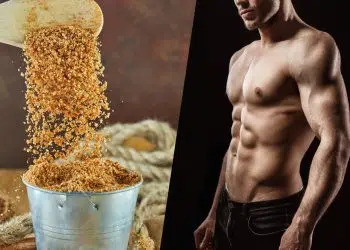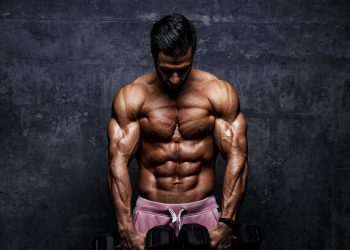When it comes to eating to get in shape, there’s a lot of confusion about carbohydrates. Many people demonize them, while others claim they are essential for energy. The truth is that there are good carbs and bad carbs.
Rice and pasta belong on the good carb list. They provide a slow-release form of energy that can power your workouts and replenish muscle glycogen post-workout. But which is better?
In this article, we put rice and pasta head-to-head to find out.
Rice Overview
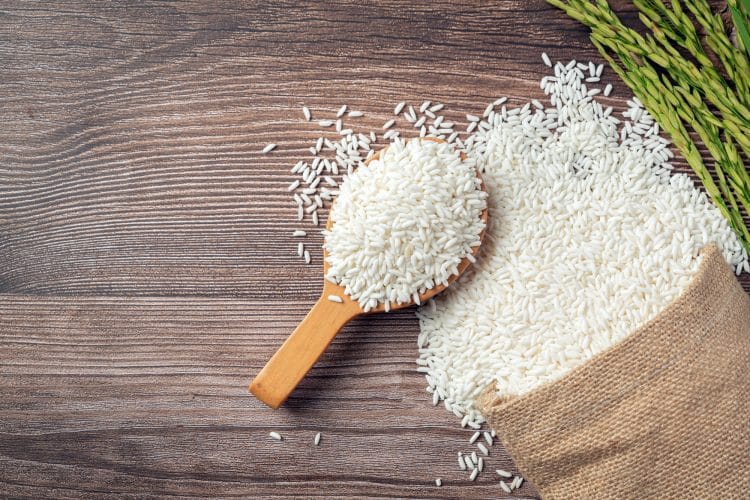
Rice accounts for 20% of the world’s caloric intake, making it the most consumed food in the world. [1]
There are many different types of rice, with the two main divisions being white and brown. White rice is stripped of the bran and the germ. This robs it of much of its vitamin and mineral content.
White rice is also relatively high on the glycemic index, scoring 64. That means it will be converted into sugar quickly in your body. This will spike your blood sugar level, which may contribute to insulin resistance and metabolic syndrome.
Level Up Your Fitness: Join our 💪 strong community in Fitness Volt Newsletter. Get daily inspiration, expert-backed workouts, nutrition tips, the latest in strength sports, and the support you need to reach your goals. Subscribe for free!
Brown rice is healthier because it is not stripped of vitamins and minerals. It retains the bran, which is an excellent source of fiber. The glycemic index is also lower, at 55, so it is released into the body more slowly.
A problem with brown rice is that it contains a high level of arsenic, one of the most toxic compounds. In fact, brown rice is the highest food source of arsenic. That’s because rice is usually grown in very wet, marshy environments that suck up arsenic from pesticides that have seeped into the ground.
The arsenic is stored in the bran of the rice grain. That’s why it is much higher in brown rice than white rice, which removes the bran.
Another problem with brown rice is its high phytic acid content. This is an anti-nutrient that blocks the bioavailability of the vitamins and minerals in the rice. You can eliminate this problem by buying sprouted or germinated rice. The sprouting process removes much of the phytic acid, allowing your body to absorb the nutrients in the rice better.
Read also: Black Rice vs. Brown Rice: Is One Superior Overall?
Best Method to Prepare Rice
Before cooking rice, you should wash it. This will help lower the arsenic content. Then, cook it in excess water, which will also help lower the arsenic level. So, rather than just covering the rice with water, you should fill the pot to three-quarters full.
The best forms of rice in terms of low arsenic content are basmati and jasmine.
Pasta Overview
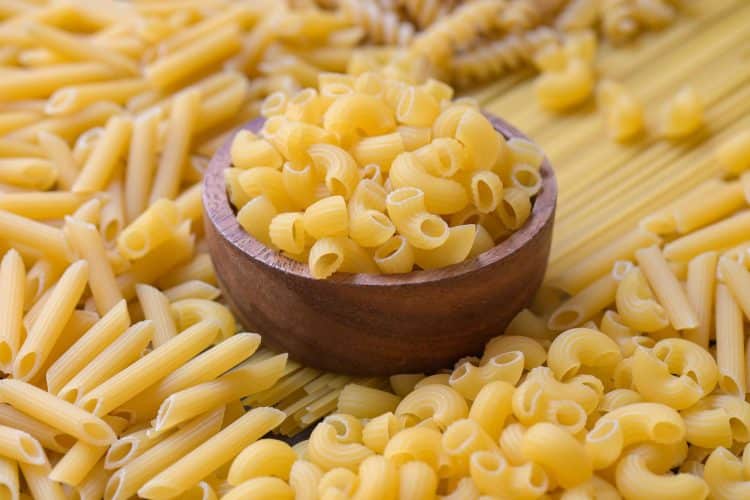
Pasta is a variety of noodles traditionally crafted from durum wheat, water, or eggs. It is shaped into various noodle forms before being cooked in boiling water.
Just like rice, some pasta undergoes refining in manufacturing, removing the bran and germ from the wheat kernel. This depletes the food of much of its nutrient value.
Some refined pastas undergo enrichment, where compounds like B vitamins and iron are added to enhance their nutritional value.
Wholegrain pasta retains the bran and germ, so none of the vitamins and minerals are removed.
Nutrient-depleted refined pasta is the most commonly consumed form. Refined pasta has a much lower fiber count than wholegrain and has a higher calorie count. That’s not a good combination for weight-conscious people as it will increase caloric intake, making you less likely to feel satiated.
A study published in Applied Physiology, Nutrition, and Metabolism found that eating whole-grain pasta led to increased fullness and decreased hunger compared to refined-grain pasta. [2]
Besides being high in fiber, whole-grain pasta is a good source of manganese, copper, selenium, and phosphorus. A cup of whole-grain pasta will also have roughly 50 fewer calories and five fewer grams of carbohydrates than refined pasta.
Many pastas contain gluten, wheat, barley, and rye protein. People sensitive to gluten and those with celiac disease should avoid these types of pasta.
Whole grain pasta is healthier due to the bran and germ retention. However, during the processing of whole-grain wheat, it is pulverized into tiny particles. This makes it faster to digest, which increases the blood sugar spiking effect.
Overall, whole-grain pasta is a healthier choice than refined pasta. More important, though, is what you put on top of your pasta. Rather than cheesey or creamy sauce, go with olive oil or a lean protein like chicken breast or fish.
Best Method to Prepare Pasta
The best way to cook pasta for maximum health benefits is al dente. That simply means that the pasta should be firm when you bite it. This produces the lowest glycemic index number to minimize the blood sugar spiking effect.
To produce an al dente result, bring a large pot of water to a rolling boil. Add salt (1-2 tablespoons for every pound of pasta you cook).
Stir the pot to distribute the salt evenly. Now, add the pasta to the pot. Stir continuously to prevent the pasta from sticking to the pot.
Check the packaging for the recommended cooking time. Start taste-testing the pasta about two minutes before the recommended time is up. It is cooked if it tastes firm but still provides slight resistance to the tooth.
Level Up Your Fitness: Join our 💪 strong community in Fitness Volt Newsletter. Get daily inspiration, expert-backed workouts, nutrition tips, the latest in strength sports, and the support you need to reach your goals. Subscribe for free!
Drain the pasta into a colander when you are happy with the taste and texture.
Al dente pasta is best served immediately.
Be sure to use healthy sauces with your pasta. Olive oil or tomato-based sauces are the best. Avoid heavy, cream-based sauces.
Rice vs. Pasta: Nutritional Breakdown
So far, we’ve established that the unrefined forms of pasta and rice are healthier than refined or white rice. This is supported by research.
A 2017 research study published in the American Journal of Clinical Nutrition found that when healthy men and postmenopausal women replaced refined grains with whole grains, there were beneficial impacts on their energy balance parameters. The study suggests that switching to whole grains may improve overall energy. [3]
Here’s a comparison of the nutrient breakdown of a 100-gram serving of whole wheat pasta and brown rice:
| Nutrient | Whole Wheat Pasta | Brown Rice |
| Calories | 124 cal | 111 cal |
| Protein | 12.2 g | 2.6 g |
| Total Fat | 1.3 g | 0.9 g |
| Carbohydrates | 25.4 g | 23.5 g |
| Dietary Fiber | 3.9 g | 1.6 g |
| Sugars | 1.1 g | 0.4 g |
| Calcium | 21 mg | 23 mg |
| Iron | 1.3 mg | 0.8 mg |
| Magnesium | 50 mg | 43 mg |
| Phosphorus | 143 mg | 165 mg |
| Potassium | 126 mg | 43 mg |
| Sodium | 1 mg | 5 mg |
| Zinc | 0.9 mg | 1.2 mg |
| Thiamine (B1) | 0.2 mg | 0.1 mg |
| Riboflavin (B2) | 0.1 mg | 0.0 mg |
| Niacin (B3) | 5.6 mg | 1.6 mg |
| Vitamin B6 | 0.3 mg | 0.2 mg |
| Folate (B9) | 49 mcg | 20 mcg |
We can see from the chart that whole grain pasta is significantly higher than brown rice in calorie count (124 calories vs 111 calories per 100-gram serving). So, if your main objective is to lose weight, brown rice is the better option.
Pasta has a much higher protein content than rice, with a 100-gram serving of whole wheat pasta containing 12.2 grams, compared to just 2.6 grams for brown rice. While you’re not going to be relying on these foods as your protein source, this makes pasta a better choice for those trying to build lean muscle tissue.
Pasta’s relatively high protein content may make it a good food choice for vegans or vegetarians looking for quality non-animal protein sources.
Brown rice is slightly lower in carbohydrates than pasta, making it a better option for people conscious of their carb intake.
Whole wheat pasta has much more fiber than brown rice (3.9 grams compared to 1.6 grams). That makes it far better at filling you up. So, if you don’t want to risk starving between meals, pasta is the better of the two options. The higher protein content of pasta also increases the satiety (fullness) effect.
Rice vs. Pasta: Mineral Comparison
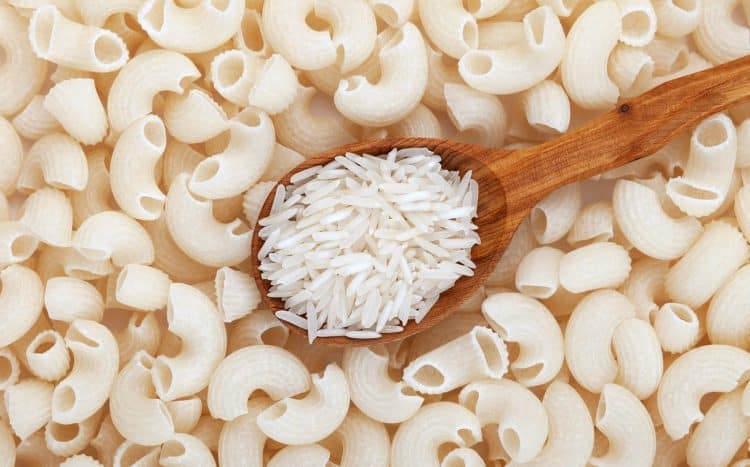
Let’s dig into the chart’s mineral comparison to identify the best choice for optimal health.
Calcium
- Whole Wheat Pasta: 21 mg
- Brown Rice: 23 mg
Neither pasta nor rice are good sources of calcium, with rice having slightly more. Get your calcium from dairy foods, leafy green vegetables, and nuts.
Iron
- Whole Wheat Pasta: 1.3 mg
- Brown Rice: 0.8 mg
Whole wheat pasta has about 1.5 times the iron in brown rice. Iron is vital in many bodily processes, including oxygen transportation and energy production.
Magnesium
- Whole Wheat Pasta: 50 mg
- Brown Rice: 43 mg
Whole wheat pasta is slightly higher in magnesium than brown rice. Magnesium is essential for muscle and nerve function, making it a critical mineral for people who work out.
Phosphorus
- Whole Wheat Pasta: 143 mg
- Brown Rice: 165 mg
100 grams of brown rice has about 20 more grams of phosphorus than whole wheat pasta. This mineral is needed to maintain strong bones and for energy metabolism. Both foods represent a significant source of this mineral.
Potassium
- Whole Wheat Pasta: 126 mg
- Brown Rice: 43 mg
Here, we have a significant difference, with pasta having around triple the potassium level than rice. We need potassium to maintain fluid balance, nerve signals, and muscle contractions.
Sodium
- Whole Wheat Pasta: 1 mg
- Brown Rice: 5 mg
Both foods are low in sodium, which is good for heart health. Whole wheat pasta, with just one gram per 100-gram serving, is the best option for people regulating their sodium intake.
Zinc
- Whole Wheat Pasta: 0.9 mg
- Brown Rice: 1.2 mg
Zinc is found in slightly greater quantities in brown rice than whole wheat pasta. This mineral is essential for the immune system’s functioning and wound healing.
Wrap Up
Rice and pasta, when consumed in appropriate amounts, can fit into a diet aimed at being nutritionally adequate and well-balanced. They are a form of slow-release carbs, which give your body a continuous flow of energy to sustain itself and keep functioning well.
Additionally, pasta and rice are fantastic sources of various nutrients, including vitamins, minerals, and fiber.
Brown rice and pasta made from whole wheat should be used instead of white rice and refined pasta whenever practicable.
Switching to brown rice, which has a lower overall calorie count, is preferable if your primary purpose is to reduce the calories you consume each day.
Pasta prepared from whole wheat is preferable for growing muscle since it contains more protein and fiber than other types of pasta.
Regardless of whether you choose rice or pasta, regulating serving sizes should be a top priority. Your meal should comprise about one-third of complex carbohydrates, such as rice and pasta, to ensure a balanced diet.
The other parts of the plate should include a lean source of protein, such as fish or chicken that has been grilled, and an assortment of vibrantly colored vegetables.
This combination offers a wide range of important macronutrients and micronutrients, which help maintain a stable level of energy throughout the day and contribute to general health.
References
- Panel. (1998). Report of the Fifth External Programme and Management Review of the International Rice Research Institute (IRRI). Food and Agriculture Organization of the United Nations.https://www.fao.org/3/w8439e/w8439e08.htm
- Cioffi, I., Santarpia, L., Vaccaro, A., Iacone, R., Labruna, G., Marra, M., Contaldo, F., Kristensen, M., & Pasanisi, F. (2016). Whole-grain pasta reduces appetite and meal-induced thermogenesis acutely: a pilot study. Applied Physiology, Nutrition, and Metabolism, 41(3), 277-283. doi:10.1139/apnm-2015-0446.
- Karl, J. P., Meydani, M., Barnett, J. B., Vanegas, S. M., Goldin, B., Kane, A., Rasmussen, H., Saltzman, E., Vangay, P., Knights, D., Chen, C.-Y. O., Das, S. K., Jonnalagadda, S. S., Meydani, S. N., & Roberts, S. B. (2017). Substituting whole grains for refined grains in a 6-wk randomized trial favorably affects energy-balance metrics in healthy men and postmenopausal women. The American Journal of Clinical Nutrition, 105(3), 589-599. doi:10.3945/ajcn.116.139683.


